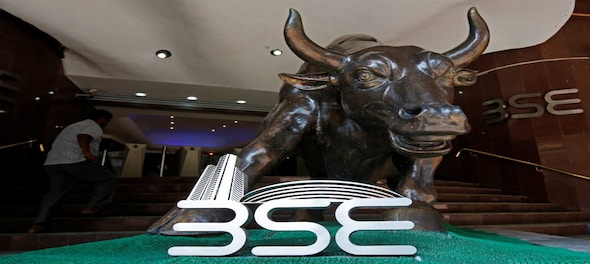
Investment firm Morgan Stanley, in a recent report, upped its BSE Sensex target to 42,000 by September 2019, saying that the Indian equities will continue to perform strong as growth is expected to pick up in the coming quarters.
The firm's report, however, points that the key risk between now and June 2019 is the market may turn pessimistic on the general election outcome scheduled in May 2019. A fragmented verdict could push market towards downtrend, especially if global cues deteriorate alongside.
Morgan Stanley's Sheela Rathi and Ridham Desai also have an advice for investors: "Do not chase outperformers but rather invest in underperformers among large caps, as well as small and mid-cap stocks."
It has added SBI, Apollo Hospitals and Prestige Estates in its portfolio of favourite under performing stocks.
Here are the main highlights and excerpts from the Morgan Stanley's report:
Buy underperformers: The report advises investors to rotate portfolio and invest in underperformers with strong growth outlook as the earnings cycle is turning and will likely broaden in the coming months.
"We are upping our index target to 42,000 for Sep-19 from 36,000 in Jun-1. On our target the Sensex would trade at a forward PE of 16.5x (compared to 18x currently) and trailing PE of 20x, higher than the 25 year trailing average of 19x. We think SMID indices look attractive on a market to GDP ratio and we think investors should selectively add those stocks. In our focus list, we are adding SBI, Prestige and Apollo Hospitals. We are removing Infy, Havells and Zee, given the recent MS analyst downgrades."
India - a pain trade: The report says that the market performance so far has been quintessentially bearish.
"Indian equities have been a pain trade for investors in 2018 as market performance quintessentially represented a bear market. Owning Indian stocks has been as painful as not owning Indian stocks, as India has outperformed the EM index by a margin. Three key trends have emerged this year, which rhyme with a bear market: a) directional difference in performance of large caps (Nifty index) and the broader market; b) collapse in stock outperformance breadth; and c) high concentration in performance within the indices."
The search for earnings: Broad-based earnings growth has remained elusive for India as only a few heavyweight companies are driving the earnings growth.
"The key to concentration in performance has been concentration in earnings. Only a few heavyweight companies are driving the earnings growth, and
thus their share in earnings in the broad market as well as the Nifty index has risen sharply."
Performance set to broaden out: A rise in investment rate is apparent as corporates sound confident about improving business growth over the next one year, says the report. Additionally, the healing of the banking system will boost outlook.
"Revenue growth in 1QF19 touched a six-year high at 17 percent YoY for the broad market. Over 61 percent of the broad market companies (out of 1,441 companies) covered reported revenue growth in excess of 10 percent YoY, and 52 percent of the companies reported net profit growth in excess of 10 percent YoY. Accordingly, we are forecasting profit growth to accelerate 20 percent over the next couple of years. Similarly, we expect the broader market to see a CAGR of about 27 percent over the next three years, potentially taking the profit share in GDP up by 100 bps."
Not really a bear market: Contrary to what earnings behaviour points at, Morgan Stanley report says that India is in a bull market and the longest in the country's history. The difference between the current and the previous bull market lies in the pace of returns which is slower.
"Earnings behaviour of the past eight years resembles a bear market, but share prices tell a different story. The Nifty is up 345 percent (up 208 percent in US$ compared with +108 percent for the MSCI EM Index) from the bottom of 2009 without seeing a sustained drawdown in excess of 20 percent; this implies that, at least technically, we have been in bull market since then. The dispersion in returns and several other indicators are not in extreme territory to suggest that we are in a bear market."
Portfolio implications: The BSE frontline index may cool down to 33,000 as global condition deteriorate, amid a possibility of poor election outcome. Sensex falling to 33,000 in a bearish market has a 20 percent chance.
There is a 50 percent probability that the BSE Sensex may hit 42,000 mark by September 2019, with a 23 percent earnings growth in the second half of 2019.
In a bull scenario which is dependent on both policy and global factors but with a 30 percent probability, Sensex may even hit 47,000 mark.
"Broader market performance means that investors should choose price underperformers with improving earnings outlooks and finally broaden their portfolios by adding SMID. We expect a macro trade to ensue, implying higher correlations across stocks. We raise our BSE Sensex target to 42,000 by June 2019, implying upside of 11 percent."
First Published: Sept 14, 2018 1:22 PM IST
Check out our in-depth Market Coverage, Business News & get real-time Stock Market Updates on CNBC-TV18. Also, Watch our channels CNBC-TV18, CNBC Awaaz and CNBC Bajar Live on-the-go!


Mark Mobius reveals how markets will react if NDA wins 400+ Lok Sabha seats
May 15, 2024 8:09 PM
Wine shops and bars to remain shut for 4 days in Mumbai in 4 weeks, check details
May 15, 2024 7:52 PM
INDIA bloc will win majority seats in Bihar, says Tejashwi Yadav
May 15, 2024 4:20 PM

